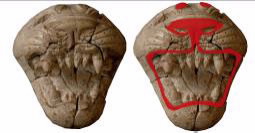FOR IMMEDIATE RELEASE
ACS News Service Weekly PressPac: May 29, 2013
Re-creating the original colors of treasured ivory carvings from the ancient past
The fabled ivory carvings from the ancient Phoenician city of Arslan Tash — literally meaning “Stone Lion” — may appear a dull monochrome in museums today, but they glittered with brilliant blue, red, gold and other colors 2,800 years ago, a new study has confirmed after decades of speculation. It appears in the ACS journal Analytical Chemistry.
Ina Reiche and colleagues explain that these carvings are rare, housed in museums like the Louvre, and art experts regard them as the most beautiful ivory carvings of the era. Experts long believed that the lion heads, amulets and other objects were brightly colored, rather than the bland beiges and whites that remain today. But until recently, there was no adequate way to test the ivories for traces of pigment without damaging these priceless objects.
The scientists describe how a non-destructive testing technology brought to life traces of red, blue and other pigments — and gold gilding — allowing re-creation of the long-vanished colors that decorated the original ivories. In addition to contributing to a new understanding of the Phoenician carvings, the technology could be used to glimpse the original paintings on other objects, the authors note. Those include the Elgin Marbles, the classical Greek marble sculptures that originally were part of the Parthenon and other buildings on the Acropolis in Athens.
The authors acknowledge funding from a doctoral grant from the UniversitÉ Pierre et Marie Curie (UPMC).
![]()
Contact
Science Inquiries: Michael Woods, Editor, 202-872-6293
General Inquiries: Michael Bernstein, 202-872-6042

head that look colorless today (left) actually were
adorned with brilliant colors 2,800 years ago
(right), scientists are reporting.

